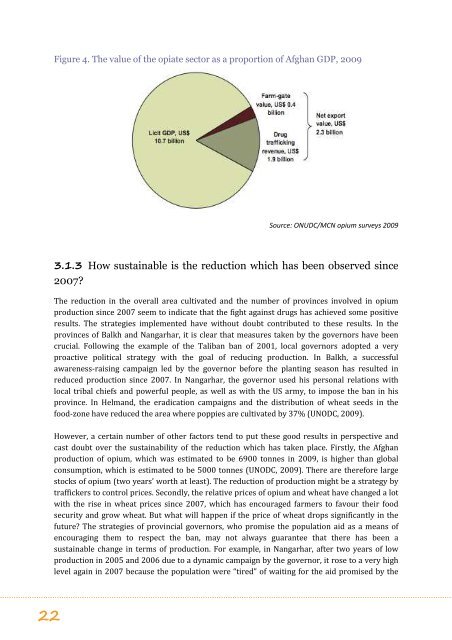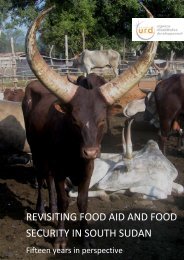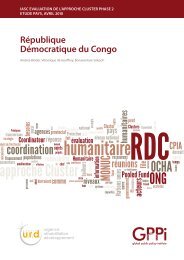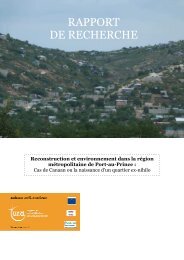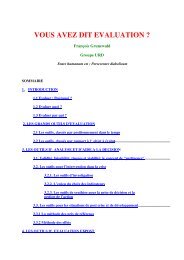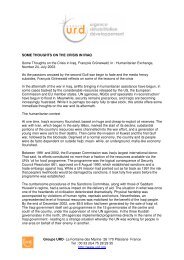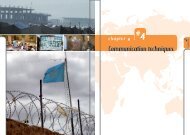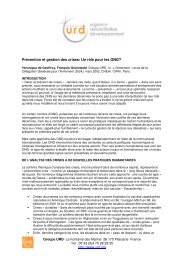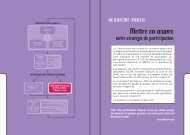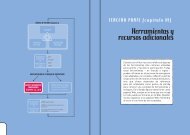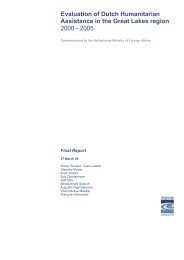strategies to counter opiate in Afghanistan - Groupe URD
strategies to counter opiate in Afghanistan - Groupe URD
strategies to counter opiate in Afghanistan - Groupe URD
Create successful ePaper yourself
Turn your PDF publications into a flip-book with our unique Google optimized e-Paper software.
Figure 4. The value of the <strong>opiate</strong> sec<strong>to</strong>r as a proportion of Afghan GDP, 2009<br />
Source: ONUDC/MCN opium surveys 2009<br />
3.1.3 How susta<strong>in</strong>able is the reduction which has been observed s<strong>in</strong>ce<br />
2007<br />
The reduction <strong>in</strong> the overall area cultivated and the number of prov<strong>in</strong>ces <strong>in</strong>volved <strong>in</strong> opium<br />
production s<strong>in</strong>ce 2007 seem <strong>to</strong> <strong>in</strong>dicate that the fight aga<strong>in</strong>st drugs has achieved some positive<br />
results. The <strong>strategies</strong> implemented have without doubt contributed <strong>to</strong> these results. In the<br />
prov<strong>in</strong>ces of Balkh and Nangarhar, it is clear that measures taken by the governors have been<br />
crucial. Follow<strong>in</strong>g the example of the Taliban ban of 2001, local governors adopted a very<br />
proactive political strategy with the goal of reduc<strong>in</strong>g production. In Balkh, a successful<br />
awareness-rais<strong>in</strong>g campaign led by the governor before the plant<strong>in</strong>g season has resulted <strong>in</strong><br />
reduced production s<strong>in</strong>ce 2007. In Nangarhar, the governor used his personal relations with<br />
local tribal chiefs and powerful people, as well as with the US army, <strong>to</strong> impose the ban <strong>in</strong> his<br />
prov<strong>in</strong>ce. In Helmand, the eradication campaigns and the distribution of wheat seeds <strong>in</strong> the<br />
food-zone have reduced the area where poppies are cultivated by 37% (UNODC, 2009).<br />
However, a certa<strong>in</strong> number of other fac<strong>to</strong>rs tend <strong>to</strong> put these good results <strong>in</strong> perspective and<br />
cast doubt over the susta<strong>in</strong>ability of the reduction which has taken place. Firstly, the Afghan<br />
production of opium, which was estimated <strong>to</strong> be 6900 <strong>to</strong>nnes <strong>in</strong> 2009, is higher than global<br />
consumption, which is estimated <strong>to</strong> be 5000 <strong>to</strong>nnes (UNODC, 2009). There are therefore large<br />
s<strong>to</strong>cks of opium (two years’ worth at least). The reduction of production might be a strategy by<br />
traffickers <strong>to</strong> control prices. Secondly, the relative prices of opium and wheat have changed a lot<br />
with the rise <strong>in</strong> wheat prices s<strong>in</strong>ce 2007, which has encouraged farmers <strong>to</strong> favour their food<br />
security and grow wheat. But what will happen if the price of wheat drops significantly <strong>in</strong> the<br />
future The <strong>strategies</strong> of prov<strong>in</strong>cial governors, who promise the population aid as a means of<br />
encourag<strong>in</strong>g them <strong>to</strong> respect the ban, may not always guarantee that there has been a<br />
susta<strong>in</strong>able change <strong>in</strong> terms of production. For example, <strong>in</strong> Nangarhar, after two years of low<br />
production <strong>in</strong> 2005 and 2006 due <strong>to</strong> a dynamic campaign by the governor, it rose <strong>to</strong> a very high<br />
level aga<strong>in</strong> <strong>in</strong> 2007 because the population were “tired” of wait<strong>in</strong>g for the aid promised by the<br />
22


